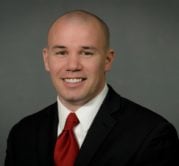Increase your credit union’s effectiveness with successful employees

Growth within any organization can be a benefit and a curse. As a company grows, it faces the challenge of on-boarding new employees while rising to the increased demands of a growing customer base. In any complex company, it is difficult to replicate the knowledge of your existing subject matter experts. Accenture Mortgage Cadence was founded on the principles of the manufacturing industry’s processes. Our product suite was architected to allow process automation, capitalizing on a division of labor to decrease not only cost, but the number of days to close a loan. Through our tremendous growth over the past several years, we are honing in on ways to increase scalability of internal resources. Read on to learn how you, too, can leverage this concept within your day-to-day processes.
There are many approaches to determine how to divide your labor force. One of the most efficient and effective ways to support organizational growth is to create a division of labor so new employees do not have to immediately become subject matter experts across all functional areas. At Accenture Mortgage Cadence, we utilize employee input, data, and logical functional areas to determine specializations. Our support/solutions team has been divided into functional areas in order to enhance our ability to work more closely with other internal teams to determine root cause of issues, provide more direct and informed feedback to functional areas, and to drive long-term change.
This division of labor provides many benefits internally and externally. Specialization within employees’ roles allow them to focus on their functional area of expertise to increase the organization’s effectiveness. This reduced scope of an individual’s role will allow a company to scale faster as the time to train employees is reduced. This also enables increased throughput due to the specialization of each functional role and the organization’s ability to divide work to those employees with a comparative advantage.
Another key component of any staffing model should include opportunities to grow both horizontally and vertically. Allowing, and encouraging, employees to move between functional areas to gain a broader depth of knowledge should be a cornerstone of any growth plan. Employees should also be encouraged to move vertically by working directly with subject matter experts within the various functional areas within the organization. This movement must be custom-tailored to the organization’s needs as well as the employee’s desire and aptitude.
It is essential to note that there is no one-size-fits-all approach to scaling. One often overlooked component of any major organizational change is constant analysis of the results. After a company has deployed major process changes, it is important to compare the results against the baseline data prior to the implementation of process change. The other key area of focus should be gathering objective and subjective data that the changes are the most efficient and effective. The ability to make subsequent adjustments is vital to the long-term success of the organizational change.
As any company grows, there are bound to be challenges in how to replicate the knowledge held by existing subject matter experts. We have found that dividing functional expertise helps reduce the breadth of knowledge a new employee would have to master before becoming effective in their role. This division of labor requires diligence by the organization to ensure employee knowledge and career growth. As with any broad organizational change, it is important to analyze and adjust as needed to make sure the organization is doing what is right for its customers, employees, and the bottom line.





